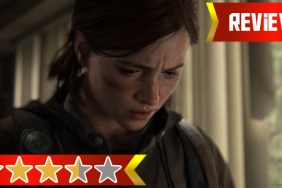Sweet and Sour
Games are a lot like candy. Some are pure sweetness, some have delectable caramel beneath rich chocolate shells, still others are nougat – the candy equivalent of veal, as Strong Bad says. Some are inexplicably covered in coconut shavings or something equivalently chalk flavored. Certain other rare, and unusual, candies attempt to involve as many different flavors as possible, cramming chocolate, nougat, coconut shavings, whipped banana cream, almond paste, walnut chips, redwood droppings, and maybe a couple slices of smoked cheddar for body, usually to extreme disaster. Maelstrom is one of these coconut shaving covered candies; it has a rough, hard-to-like exterior, but at the center is a really fantastic game.
[image1]Maelstrom: the Battle for Earth Begins is, at first glance, a somewhat bizarrely phrased and mediocre-looking RTS, with a gabble of me-too features and an art style that looks like it was only half-realized. During the first campaign, all the story you get is that Earth has collapsed and has two factions duking it out – the Remnants and the Ascension. Neither the graphics nor the sound make a good first impression either. There’s that chalky taste in your mouth.
The underlying game, however, is impressively good. Three very different factions, each with a unique play-style and personality, are available. Each race not only has a central tactic, but also tends to operate in a distinct manner. The Remnants, so named because they are all that is left of the freedom-loving populaces of Earth, build bases with strong defenses and rely upon a combination of stealth and artillery tactics to fight their foes. The basic Remnant infantry unit – the trooper – has the interesting ability to convert to one of the other major forms of infantry on the fly, letting the player shift a force to fit a situation as he needs. The Ascension, meanwhile, have bases that can break down into trucks and set up anew elsewhere, giving them some distinct mobility; their forces, however, rely more upon brute force, as many of their units have strong direct attacks and regularly regenerating armor. The Ascension fields far fewer tactical tools than the Remnant, but just about every single unit available to the Ascension is tough and doles out some damage. The Hai-Genti , an alien faction who show up late to the party, rely upon swarming their opponents and the ability to quickly summon vast armies.
In terms of economics, there are three relevant resources: energy, mass, and water. Mass ends up with a couple different names – DNA for the Ascension, scrap for the Remnants, and biomass for the Hai-Genti. These resources are generated by control of specific places on the map – survivor compounds for mass, and water pumps for water. Energy is freely available everywhere, thanks to Al Gore’s invention of solar panels and clean energy.
[image2]The game introduces a very interesting concept that, to the best of my knowledge, has never made its way into any other RTS: altering the terrain. Each faction has a means of altering the battlefield in a distinct way. The Remnants and Ascension can shape the ground, allowing them to build natural defenses or cut new paths into enemy bases, or simply build a bridge where none existed before. The Hai-Genti can flood the map, creating vast watery areas where it’s much harder for the human factions to project power. The flooding also has the secondary benefit – water makes the Hai-Genti troops stronger, and weakens enemy troops, for quite the double-whammy. Flood the world AND have near-invulnerable poison-spitting lizards floating just under the surface? The Hai-Genti can one-up the old testament god. Terrain deformation and water make up a lot of the gameplay and tactical thinking, and really add a huge new element to what would otherwise be a somewhat cookie-cutter, RTS.
Unfortunately, not everything is so revolutionary. The game is curiously quiet, with ill-fitting orchestral dalliances in place of a proper soundtrack and surprisingly little ambient noise. Animation quality is poor, walking frequently looks more like a person treading water than actually plodding across ground. Combat can be curiously low-key as well, with thirty or forty men firing guns at once with little actual noise involved in the process.
Oddly, the voice acting is top-notch – much better than you’re likely to hear in most other modern games. Although there can be some visual mismatches with some characters’ voices, the quality of the acting and the tone of the comments are wonderful. Even the units have some amusing comments as well as some appropriately panicked shouts as they die in battle. I really can’t, as a writer, top a game that slips in the phrase, “I love children, I just couldn’t eat a whole one!” as a comment by one of its leading characters.
But we’re not through yet! Maelstrom still crams a couple of extra bits in – a third-person shooter aspect, and some RPG-esque tidbits. Each faction has a few heroes who gain levels as they kick more ass. Oddly, this is capped to a maximum level of 6 – just high enough to make the hero seem like a bad-ass, but not actually strong enough to fight off an army by himself.
The third-person shooter part is a different story. Motion is awkward, you can’t run or otherwise affect the speed of your movement too well, and while the game physics work very well at the strategic level, they can be surprisingly awkward when you’re taking your hero for a spin around the map. It can be frustrating to stumble around since it’s often very unclear why you can’t walk through places that look exactly identical to places you can. Also, the first time you shoot the wreck of a car and it goes flying into the sunset, you’ll know there are some small gravity issues that could use working out.
[image3]Strangely, despite all the problems, there’s still a lot of incentive to use the shooter mode – for one thing, the heroes can be pretty deadly when managed well. For another, you can attack opponents that are quite far away to close a trap or spring an ambush while in shooter mode. By the end of the game, I was sold on the idea, but really wished they’d taken more time to polish it – especially the running speed. Heroes should be able to run faster than an Olympic sprinter ditching the cop he just kicked a cop in the nads, not hobbling slowly like a geriatric with a walker.
The single player campaign is surprisingly good, and quite long. Fortunately, it doesn’t feel like it’s dragged out, but rather manages to keep things fresh both through the dynamics of the gameplay and by changing the objectives on you fairly regularly. The best aspect of the campaign, however, is that it gets better as it goes, moving from that initial thin feeling to, by the end, quite a rich experience. There are a couple missions that will really force you to perfect your tactics as well, so don’t expect an easy time of things.
Maelstrom limits you to 6 players in multiplayer, and this is definitely a good thing. While the game performs well enough solo, in multiplayer the system specs become much more important. As it stands, 6 player games can get pretty damned close to unbearable – the constant terrain deformation, soldiers everywhere, and some flooding thrown in for good measure, really stresses the machina infernala.
There’s a lot to appreciate hidden behind Maelstrom’s ugly exterior. With any luck, KDV Games will be greenlit for a sequel and will have the opportunity to polish up the aesthetics to match the good gameplay. Oh, and lose the coconut while you’re at it.
-
Excellent faction balance
-
Terraforming fun!
-
Great voice acting
-
Strong campaign
-
Mediocre graphics
-
Bad animations
-
Strangely quiet
-
Multiplayer performance issues











